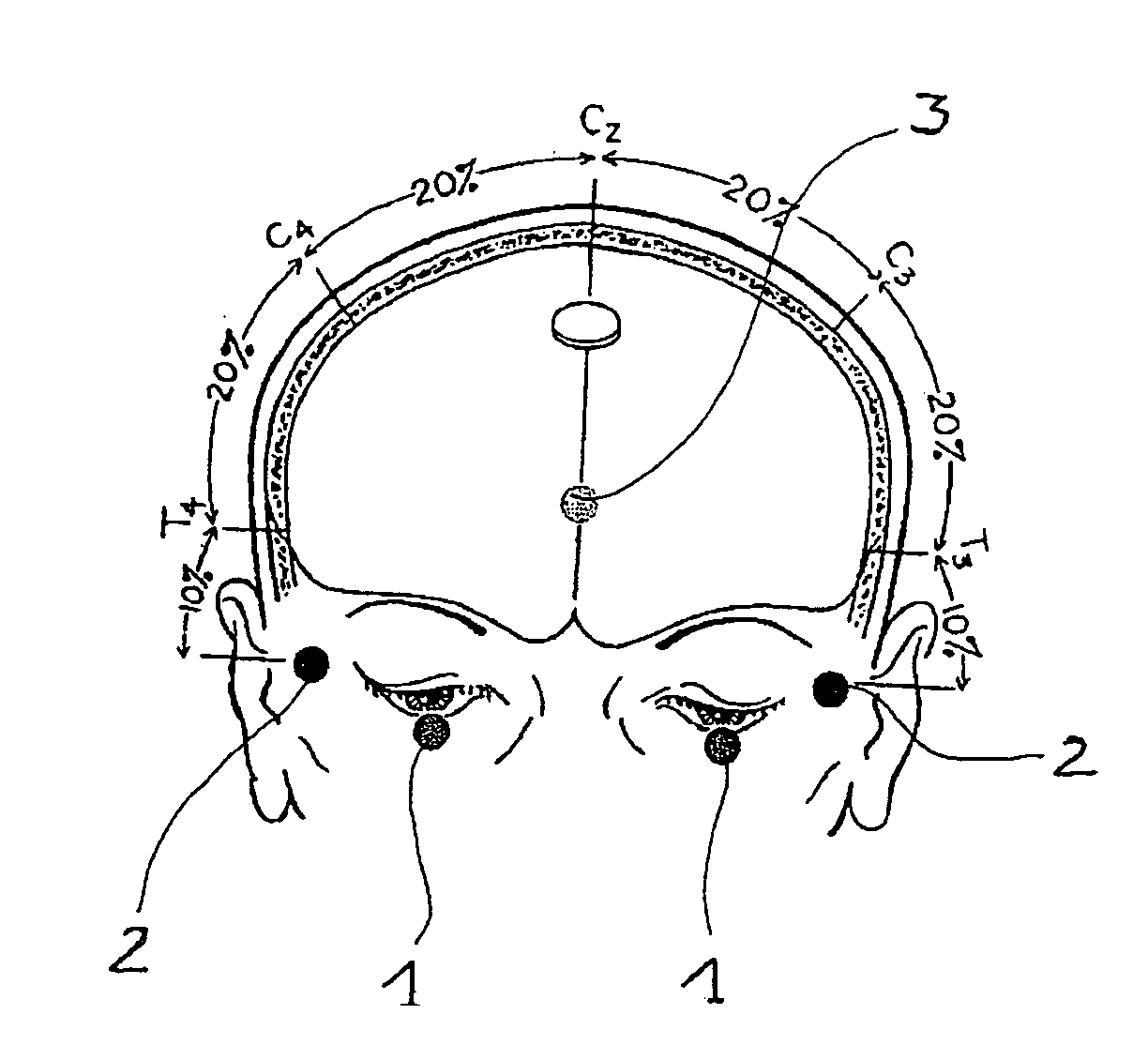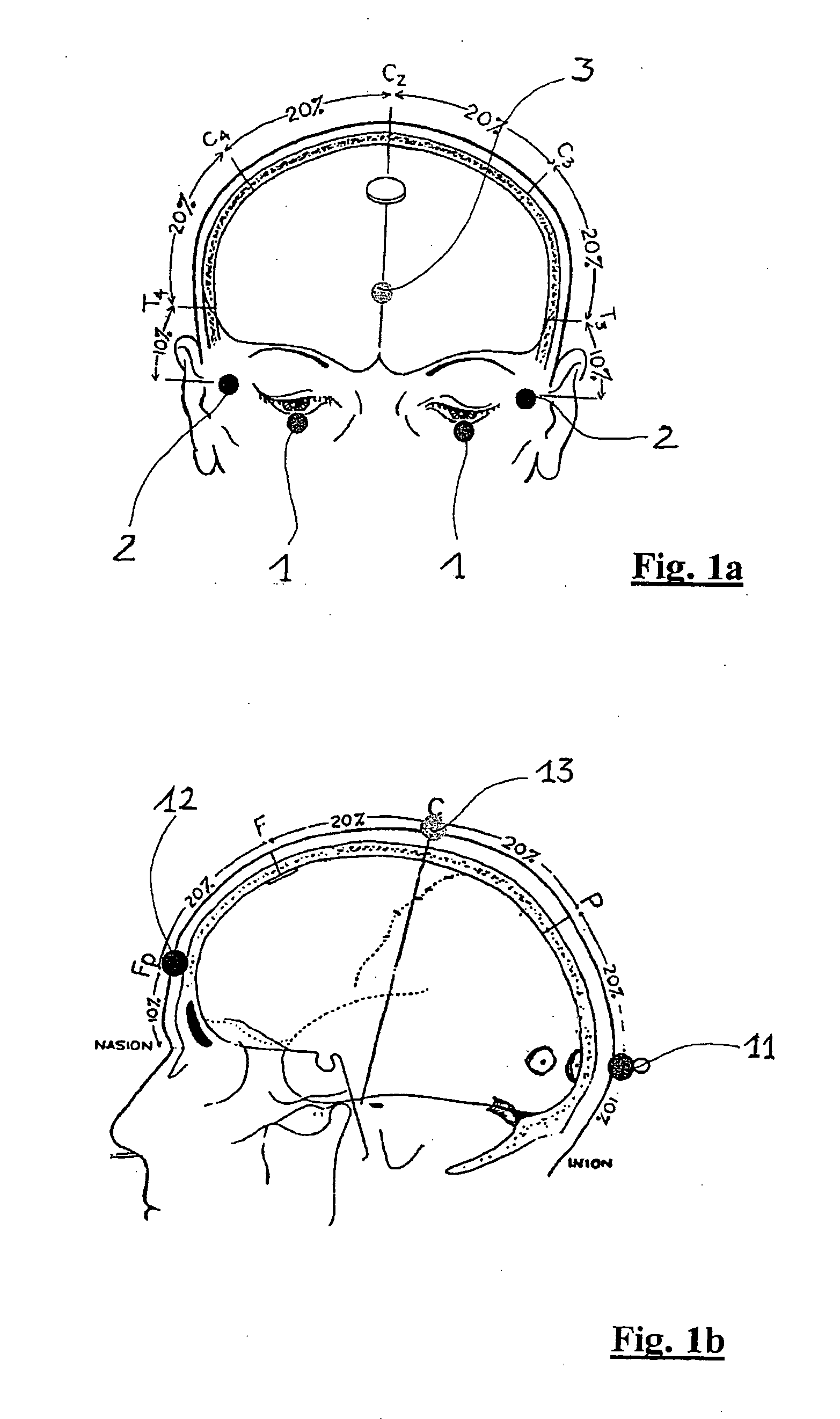System and process for recording ERG, PERG and VEP multifocal electrofunctional responses in real-time
a multi-functional electrofunctional and real-time technology, applied in the field of ophthalmology, can solve the problems of lack of control of retinal and/or cortical areas really stimulated, requiring very long execution times, etc., and achieve the effect of eliminating uncertainties in measurement and improving quality control
- Summary
- Abstract
- Description
- Claims
- Application Information
AI Technical Summary
Benefits of technology
Problems solved by technology
Method used
Image
Examples
Embodiment Construction
[0020]Referring now to the drawings and, more particularly, to FIGS. 1-5, there is shown generally a specific, illustrative system and process for recording ERG, PERG and VEP multifocal electrofunctional responses in real-time, according to various aspects of the present invention. In one embodiment, illustrated generally in FIGS. 1a, 1b, 2 and from 4a-4h, a configuration of electrodes is arranged on the face of a patient to be examined, as in conventional ERG, PERG and VEP recording techniques. Specifically, in case of retinal biopotential (FIG. 1a), an active exploring electrode is inserted inside the lower conjunctival fornix (positions 1) or on the corneal surface of each eye, the electrode coming into contact with the eyeball or also at the level of the central visual cortex using surface electrodes, so as to pick up a bioelectric signal generated by the stimulated areas. Preferably, in order to record the retinal biopotential, the electrode is of the HK LOOP type, which compri...
PUM
 Login to View More
Login to View More Abstract
Description
Claims
Application Information
 Login to View More
Login to View More - R&D
- Intellectual Property
- Life Sciences
- Materials
- Tech Scout
- Unparalleled Data Quality
- Higher Quality Content
- 60% Fewer Hallucinations
Browse by: Latest US Patents, China's latest patents, Technical Efficacy Thesaurus, Application Domain, Technology Topic, Popular Technical Reports.
© 2025 PatSnap. All rights reserved.Legal|Privacy policy|Modern Slavery Act Transparency Statement|Sitemap|About US| Contact US: help@patsnap.com



